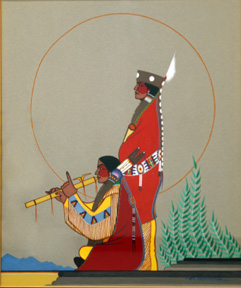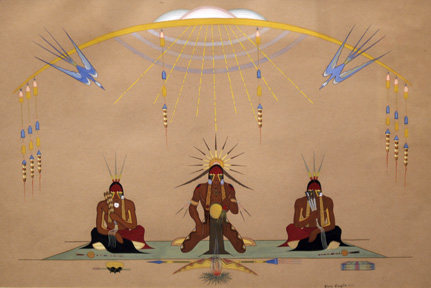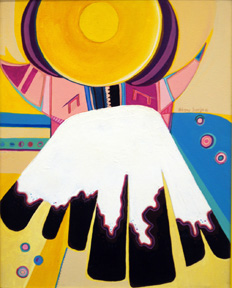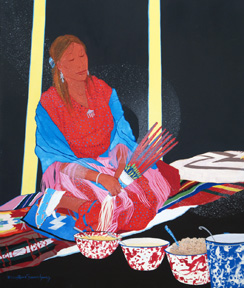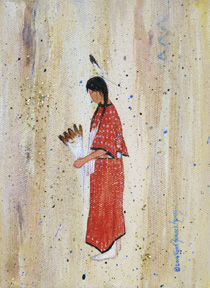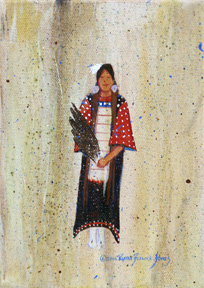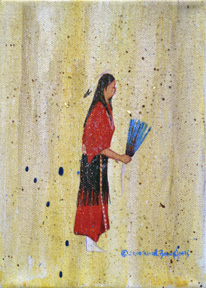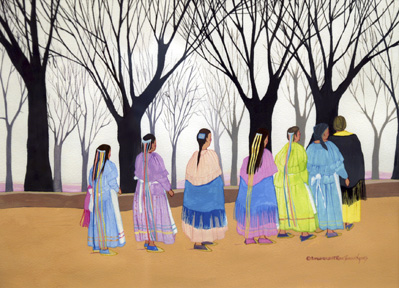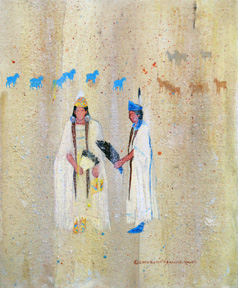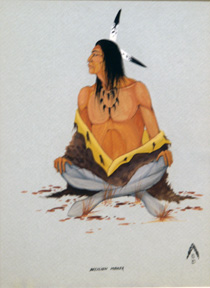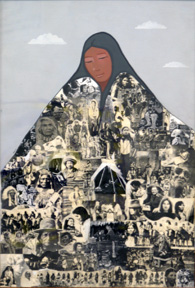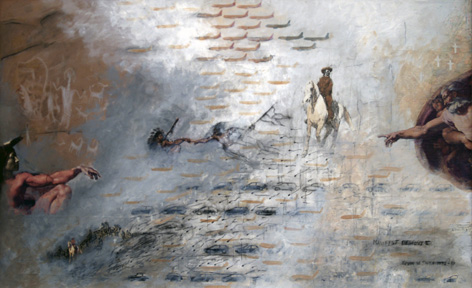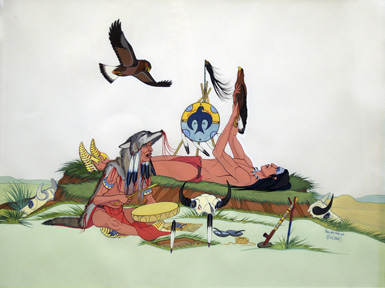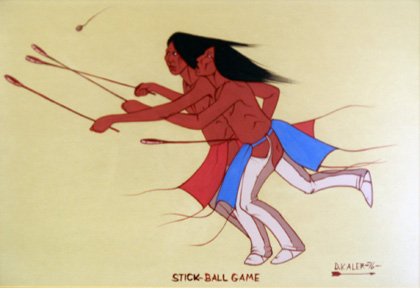Raising the Standard for Indian Art: The Legacy of Bacone College
The art department at Bacone College in Muskogee, Okla., was founded in 1935 during an era when Indian artists were transforming their art — from what had been a form of religious expression and a type of shorthand used mainly to record personal and tribal histories, into a modern graphic art style.
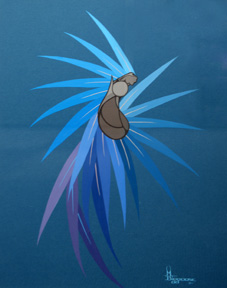
The University of Arkansas Libraries celebrated American Indian Heritage Month in November with an exhibit honoring the legacy of the Bacone College art department. Featured in this exhibit were selections from three well-known directors of Bacone's art department, as well as pieces from some of its world-renowned students and faculty. "Raising the Standard for Indian Art: The Legacy of Bacone College" gives an overview of the Bacone style and its evolution.
Acee Blue Eagle (1909-1959) was Bacone's founding art department director. His style was known for its drama, movement, mythical subjects and brilliant color. His influence helped produce what became known as the "Bacone," or "traditional Oklahoma style," according to the National Cowboy & Western Heritage Museum. That style includes an idealized version of bygone Indian life with stylized use of form, color and outline. Blue Eagle's "Peyote Dream" is a brilliant representation of this two-dimensional, highly stylized form.
W. Richard "Dick" West Sr. (1912-1996) became the third director of Bacone's art department in 1947 and held that position for 23 years. Under his long and influential term, Bacone's art program provided a positive, encouraging and creative environment for its students. The "school" of Bacone artists continued working in the traditional forms: they looked to the romantic past for inspiration, depicted figures from legends, mythology, and ceremonies, and presented them in theatrical and sometimes mysterious forms. West's "Dream Shield" (1965) recreates an idealized formal Indian ceremony, simultaneously telling a story and creating a sociological record with its wealth of detail.
Ruthe Blalock Jones, director of Bacone's art department since 1979 and one of the foremost authorities on American Indian art, has more pieces in the exhibit than any other artist. Small works in the exhibit, such as "Red and Blue Shell Dress Girl," represent a typical assignment she gives her students in courses on traditional Indian art. But in works such as "Shawano Wa Quah" and "NAC Breakfast," she demonstrates a more fluid and languid, quiet and contemplative view of traditional American Indian ceremonial and social events.
Jones notes that the one overarching message of all of her work is "We Are Still Here." She would like her paintings to remind all peoples that American Indians "are definitely a part of contemporary life, but when the doors close, we are different from other people. We practice our traditions and beliefs, and we are passing them on to the next generations."
Also depicted in the exhibit are variations on the theme of the Bacone style provided by artists Archie Blackowl (1911-1992), Lee Joshua (b. 1937), Mars Biggoose (1943-2000), Sharron Ahtone Harjo (b. 1945), and Kevin W. Smith, currently a faculty member at Bacone and the curator of this exhibit.
Find more information at http://www.bacone.edu/.
(Click thumbnail image to enlarge.)
